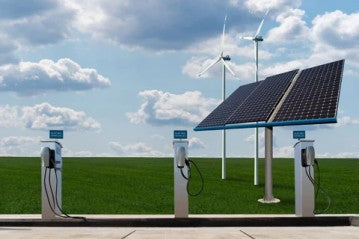
As the demand for sustainable energy solutions continues to rise, more and more homeowners and businesses are turning to solar power. Solar energy not only helps reduce carbon emissions but also provides a reliable and cost-effective alternative to traditional electricity sources. To harness the full potential of solar power, one must understand the intricacies of solar batteries and inverters, particularly when it comes to charging a battery while using an inverter. In this blog post, we will delve into the different types of solar batteries, explain why it is possible to charge batteries while the inverter runs, and provide insights on how to charge a battery using an inverter.
1. Types of Solar Batteries
Solar batteries play a crucial role in storing the energy generated by solar panels. They enable us to utilize solar power even when the sun is not shining. Here are some common types of solar batteries:
a. Lead-Acid Batteries: Lead-acid batteries are the oldest and most widely used type of solar battery. They are affordable, reliable, and can withstand deep discharges. However, they require regular maintenance, have a limited lifespan, and are less energy-efficient compared to newer technologies.
b. Lithium-Ion Batteries: Lithium-ion batteries have gained popularity in recent years due to their high energy density, longer lifespan, and lower maintenance requirements. They offer higher efficiency and a greater depth of discharge, making them an excellent choice for solar energy systems.
c. Flow Batteries: Flow batteries are a relatively new technology that uses liquid electrolytes stored in external tanks. They offer scalability and long cycle life, making them suitable for larger-scale solar installations.
2. Why You Can Charge Batteries While the Inverter Runs
Yes, it is possible to charge a battery while using an inverter. The inverter serves as the bridge between the solar panels, the battery, and the electrical load. Here's why it works:
a. Inverter Functionality: An inverter converts the direct current (DC) generated by the solar panels into alternating current (AC) for use in our homes and businesses. When connected to a solar battery, the inverter regulates the charging process. It monitors the battery's state of charge and adjusts the current and voltage levels accordingly to ensure safe and efficient charging.
b. Dual-Mode Inverters: Many modern inverters come equipped with dual-mode functionality, enabling them to operate in both grid-tied and off-grid modes. In grid-tied mode, excess solar energy is fed back into the electrical grid, whereas in off-grid mode, the inverter charges the battery using solar power and supplies electricity to the connected loads.
c. Hybrid Inverters: Hybrid inverters combine the functionalities of grid-tied and off-grid inverters. They allow for seamless integration of solar panels, batteries, and the electrical grid. With a hybrid inverter, you can charge the battery while simultaneously using solar power to run your appliances. This flexibility ensures continuous power supply, even during periods of low sunlight or grid outages.
3. How to Charge a Battery Using an Inverter
Now that we understand the compatibility between inverters and battery charging, let's explore the steps involved in charging a battery using an inverter:
a. Determine Inverter Capacity: The first step is to ensure that your inverter has the capacity to handle the charging needs of your solar battery. Check the specifications and consult with a solar energy professional to ensure compatibility.
b. Connect the Inverter: Connect the inverter to your solar panels, battery bank, and electrical load following the manufacturer's guidelines. Make sure to use the appropriate cables and connectors for a secure and efficient connection.
c. Set Battery Charging Parameters: Most inverters allow you to set specific charging parameters for your battery. These parameters include charging current, charging voltage, and charging mode. Consult the inverter's user manual or seek professional assistance to configure these settings according to your battery manufacturer's recommendations.
d. Monitor and Optimize: Regularly monitor the charging process and battery performance using the inverter's monitoring system or associated software. This will help you identify any potential issues and optimize the charging efficiency.
e. Safety Considerations: Ensure that you follow all safety precautions while connecting and charging your battery. This includes using proper protective gear, adhering to electrical codes, and avoiding overloading the inverter.
Conclusion
In conclusion, the combination of solar batteries and inverters provides a powerful solution for harnessing and storing solar energy. With the right equipment and proper configuration, you can charge a battery while using an inverter, enabling uninterrupted power supply and maximizing the utilization of renewable energy. Whether you choose lead-acid, lithium-ion, or flow batteries, ensure compatibility with your chosen inverter and follow the manufacturer's guidelines for optimal performance. If you are unsure about the technical aspects, it is always recommended to consult with a professional solar energy provider who can assist you in selecting the right components and configuring your system for efficient battery charging and usage.
By investing in solar energy and understanding the interplay between solar batteries and inverters, you can contribute to a sustainable future while enjoying the benefits of reliable and affordable clean energy.

0 Kommentare